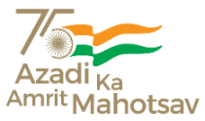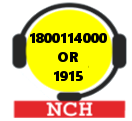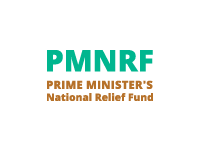To be published in the Gazette of India Extra ordinary, Part II section 3, sub-section (i) dated ………….]
Government of India
Ministry of Consumer Affairs, Food and Public Distribution
Department of Consumer Affairs
NOTIFICATION
New Delhi, the 15th, April, 2005
GSR 238(E)– In exercise of the powers conferred by section 83 of the Standards of Weights and Measures Act, 1976 (60 of 1976), the Central Government hereby makes the following rules further to amend the Standards of Weights and Measures (General) Rules, 1987, namely:-
1. (1) These rules may be called the Standards of Weights and Measures (General) Amendment Rules, 2004.
(2) It shall come into force immediately on the expiry of one hundred eighty days from the date of their publication in the Official Gazette.
2. In the Eighth Schedule to the Standards of Weights and Measures (General) Rules, 1987, for Parts IV, the following shall be substituted, namely:-
“PART IV - WATER METERS
(DOMESTIC TYPE)
1.GENERAL
This part applies to water meters intended for metering potable cold water with threaded end connections and of nominal sizes upto and including 50 mm. The part applies to both wet dial and dry dial meters.
2. TERMINOLOGY –
(i) Nominal Pressure
The internal pressure, expressed in Mpa corresponding to the maximum permissible working pressure.
(ii) Flow rate
The volume of water passing through the water meter per unit of time; the volume being expressed in litre and the time in hours, minutes or seconds.
(iii) Flow delivered
The total volume of water which has passed through meter in a given time.
(iv) Maximum flow Rate, Q max
The highest flow rate at which the meter can function over limited periods without damage and without exceeding the maximum permissible errors and the maximum permissible value for loss of pressures, expressed in kl/h.
(v) Nominal Flow Rate, Qn
Half the maximum flow rate, Q max; expressed in kl/h. At the nominal flow rate Qn, the meter should be able to function in normal use, i.e. in continuous and intermittent operating conditions, without exceeding the maximum permissible error.
(vi) Minimum flow rate, Q min
The lowest flow rate at which the meter is required to give indications within the prescribed maximum permissible error. It is determined in terms of Q n
(vii) Flow rate range
The range limited by the maximum and the minimum flow rates (Q max and Q min). The range is divided into two zones called upper and lower zones, separated by the transitional flow rate Qt.
(viii) Transitional flow rate, Qt
The flow rate which divides the upper and lower regions of the flow range and the rate at which the maximum permissible errors become discontinuous.
(ix) Pressure loss
The pressure loss caused due to the presence of the water meter in the pipe line.
(x) Water Meter-Dry Dial –
Meter in which the counter mechanism is isolated from water flowing through the meter.
(xi) Water Meter, Wet-Dial Type—
Meter in which the complete counter unit is in contact with water flowing through the meter.
3. NOMINAL SIZES—
Water meters shall be of the following nominal sizes; 15 mm, 20 mm, 25 mm, 40 mm and 50 mm.
The nominal size of the water meter shall be denoted by the nominal bore of its end connections.
4. Classes of Water Meters
The water meters are classified as Class A and Class B based on the maximum verification scale interval and metrological characteristics.
5. MATERIALS AND MANUFACTURE
(1) General – Water meters and their parts, especially parts coming in continuous contact with water shall be made of materials resistant to corrosion and shall be non- toxic and non-tainting. Use of dissimilar metals in contact under water shall be avoided [as for as possible] in order to minimize electrolytic corrosion.
Construction:
(2) The meters shall be constructed in such a way as to:
(i) give long service and guarantee against any fraud or tampering; and
(ii) conform with the provisions of these rules.
(3) Body:- The body shall be free from all manufacturing and processing defects, such as blow-holes and spongy structure and shall not be repaired by plugging, welding or by the addition of materials. The internal shape of the body shall ensure smooth flow of water and easy dismantling.
(4) Registration Box--The registration box of dry-dial water meters shall be provided with one or two escape holes for minimizing the accumulation of condensed water. In the case of magnetic driven type or where the registration box and cap are integral with the body, no escape hole shall be provided.
(5) Cap—Where the Cap and registration box are integral, the material for cap shall be the same as used for registration box. The cap shall be so designed and fixed to the registration box as to avoid entry of water and dirt. The transparent window which covers the dial shall be inserted from the inside into the cap. The protective lid shall be secured by a robust hinge or other suitable method of robust construction. Cap ring where applicable should be of the same material as of the cap.
(6) For dry type water meters, the transparent window covering the dial shall be provided with a wiper on the inner side for wiping off condensed water.
(7) Connections – The meter casing shall be fitted in the pipe line by means of two cylindrical nipples or tailpieces with connecting nuts which shall be provided with each meter. The internal diameter of the nipple where it connects the pipeline shall be equal to that corresponding to the nominal size of the meter.
(8) Strainers—Water meters shall be provided with strainers. Strainers shall be of a material which is not susceptible to electrolytic corrosion. They shall be of corrosion resistant materials. They shall be rigid, easy to remove and clean and shall be fitted on the inlet side of the water meter. It shall be possible to remove and clean the strainer in such a way as not to permit disturbing the registration box or tampering with it. The strainer shall have a total area of holes not less than twice the area of the nominal inlet bore of the pipe to which the meter is connected. However in the case of meters provided with internal strainer, involving opening of the registration box for cleaning, an additional external strainer shall be fitted on the inlet side satisfying the above requirements.
(9) Impellers and pistons – Impeller and Impeller shaft assembly shall rest on a self-lubricating lubricating with low frictional resistance.
(10) Rotary or oscillating pistons in the case of semi-positive type meters shall be of non absorbent material, such as vulcanite or ebonite. Pistons shall be accurately finished and shall operate freely.
(11) Impeller or Measuring Chamber – The impeller or measuring chamber shall be of a corrosion resistant material and shall be rigid and shall not change its form as a result of internal stresses or with use.
(12) Gears and pinions – Gears and pinions shall be so constructed properly and smoothly mesh with each other and shall be firmly fitted on their shafts.
(13) Bearings – Impeller bearings shall be suitably ground and polished. The shape of the impeller bearing shall be such as to prevent the penetration of particles of sand
and to preclude the deposit of any thing in solution or suspension in water and to facilitate the washing way of such deposits by the water flow. The shafts of the gears
shall revolve freely in their bearings. The length of the bearings shall ensure their effective operation.
(14) Counter—The non-reversible counter shall be of the circular multi-pointer pattern with all pointers reading clockwise or straight reading cyclometer type or a combination of pointer and cyclometer. The rollers of the counters shall be made of specially suitable for the purpose and shall be self-lubricating. The pointers made of suitable materials shall be soldered to the spindle.
(15) Dial—The dial shall be of vitreous enamel powder coated on copper or plastics ensuring indestructible marking and good legibility.
(16) Regulator – Every meter shall be provided with a regulator. The regulator accessible from outside shall be operated by a key without dismantling the meter and not without breaking the seal. The internal regulating device shall not be accessible from outside.
(17) Location of Serial Number—The serial number of the meter shall be clearly indicated on the screw cap or in any other suitable place.
(18) Frost Protection Device.
Meters liable to be damaged by frost when so ordered by the purchaser shall be protected with suitable frost protection device.









 उपभोक्ता मामले विभाग
उपभोक्ता मामले विभाग










